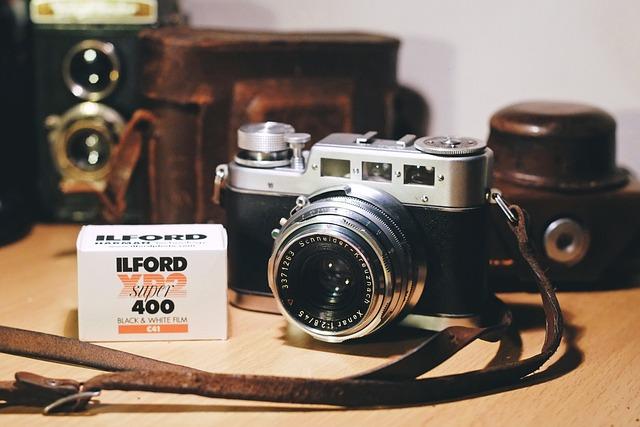Title: Reframing the Classics: Navigating Problematic Elements in Timeless Cinema
In the evolving landscape of media consumption, the way we engage with classic films is undergoing a critical transformation. As society progresses, the once-overlooked problematic elements in these films—ranging from racial stereotypes to gender biases—are increasingly coming under scrutiny. This shift raises an essential question: Should these elements be addressed during modern viewings? By examining the intersection of historical context and contemporary values, this article delves into the complexities of reconciling the past with the present. Through an analytical lens, we explore the implications of confronting these issues head-on, assessing both the potential benefits and challenges of doing so.
Understanding Historical Context and Its Influence on Modern Perceptions
When examining classic films through a contemporary lens, it’s crucial to consider the historical context in which they were created. This context not only shaped the narratives and characters but also influenced societal norms and values of the time. Ignoring these elements can lead to misinterpretations and oversimplifications of a film’s intent and impact. By understanding the era’s cultural and social dynamics, viewers can gain a more nuanced appreciation of the film while critically engaging with its content.
Modern perceptions are often influenced by contemporary values, which can clash with the dated perspectives found in older films. Addressing these elements requires a balance between respecting the film’s historical significance and acknowledging its problematic aspects. Considerations might include:
- Cultural Sensitivity: Recognizing outdated stereotypes and addressing them in discussions.
- Educational Context: Providing viewers with background information to foster understanding.
- Artistic Intent: Evaluating the creator’s purpose and the film’s role in its time.
Ultimately, addressing these elements allows for a richer viewing experience, promoting both appreciation and critical dialogue.

Evaluating the Impact of Problematic Content on Contemporary Audiences
In the digital age, audiences are increasingly aware of the cultural and social implications of media they consume. Problematic content in classic films, such as outdated stereotypes or offensive language, can significantly impact contemporary viewers. While some argue that these elements should be preserved as historical artifacts, others contend that they reinforce harmful narratives. This raises questions about how these films should be presented today.
When evaluating their impact, it’s essential to consider how these films can be contextualized for modern audiences. Possible approaches include:
- Content Warnings: Providing alerts before the film begins to inform viewers of potentially offensive material.
- Educational Segments: Including introductions or discussions that offer historical context and explain the significance of the content.
- Edited Versions: Offering alternative versions with problematic scenes modified or removed.
These strategies not only respect the artistic integrity of the original work but also acknowledge the evolving cultural landscape, allowing audiences to engage with classic films in a more informed and critical manner.

Strategies for Addressing Sensitive Elements in Classic Films
Addressing sensitive elements in classic films requires a thoughtful approach that respects both the historical context and contemporary values. One effective strategy is to incorporate content warnings or disclaimers at the beginning of the film. These can provide viewers with context about the cultural or social norms of the time when the film was made, helping to frame the problematic elements within their historical backdrop.
Another strategy is to include educational discussions or panel talks as supplementary content. This can be achieved through:
- Expert Commentary: Film historians or cultural experts can provide insights on the social dynamics of the era.
- Interactive Features: Digital platforms can offer interactive annotations or discussion forums.
- Documentary Shorts: Brief documentaries can explore the evolution of societal norms since the film’s release.
By employing these methods, we can engage audiences in meaningful dialogue while preserving the artistic and historical integrity of classic films.

Recommendations for Educators and Curators in Presenting Classic Cinema
- Contextualize the Film: Provide historical background to help viewers understand the era’s social norms and cultural attitudes. This can include a brief introduction or accompanying materials that highlight how societal values have evolved since the film’s release.
- Facilitate Open Discussions: Encourage dialogue by organizing forums or Q&A sessions. This allows audiences to express their perspectives and engage critically with the material, fostering a deeper understanding of the film’s complexities.
- Use Trigger Warnings: Offer content advisories to prepare viewers for sensitive themes. This approach respects audience sensibilities while maintaining the integrity of the original work.
- Highlight Artistic Merit: Focus on the film’s contributions to cinema, such as innovative techniques or storytelling methods. This helps to balance the discussion between the film’s artistic achievements and its controversial aspects.
- Integrate Diverse Perspectives: Invite guest speakers or include resources from varied backgrounds to provide multiple viewpoints. This enriches the viewing experience and broadens the conversation beyond a single narrative.

